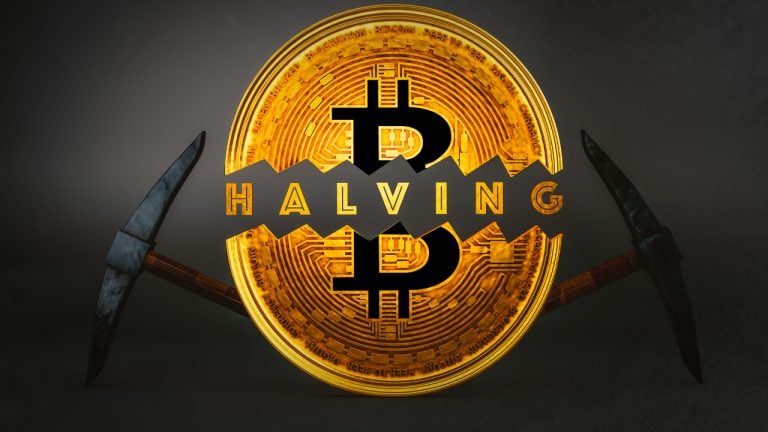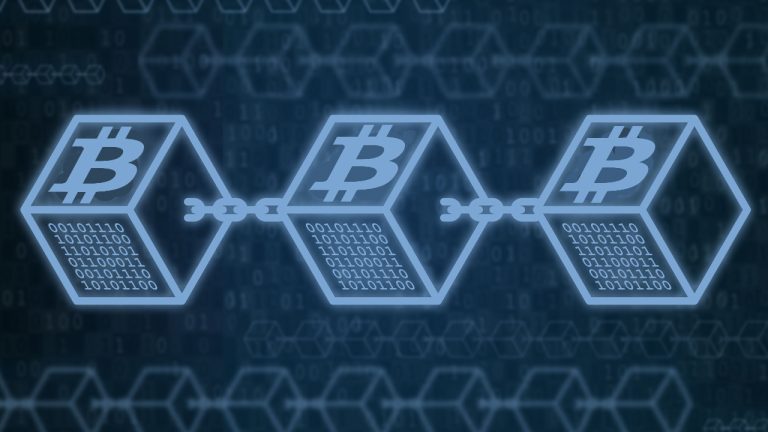
The crypto world is full of technical terms, some of which are so difficult that almost no one understands them.
Getting to grips with cryptocurrency isn’t easy. Even after you’ve got your head around Bitcoin and Ethereum and the difference between proof-of-work and proof-of-stake, there’s still a whole new world of terminology to learn and understand.
But even among fairly hardened cryptonians, there are still terms that are difficult to understand. Here are the seven terms that almost nobody in blockchain understands as fully or as deeply as they’d like.
In the 1958 movie starring Steve McQueen, and its 1988 remake, The Blob is an amoeba-like jello monster that terrorizes the inhabitants of a small town, growing larger and redder as it consumes them.

Crypto investment firm Galaxy Digital is issuing a warning, saying that Bitcoin (BTC) layer-2s are in danger of potentially losing their funds. In a new research post, the crypto firm says Bitcoin’s blocks – or files where information is stored and encrypted – are crowded due to excessive demand. According to Galaxy Digital, BTC layer-2 […]
The post ‘Only a Small Number Can Survive’ – Galaxy Digital Issues Warning to Bitcoin Layer-2s Amid Scarce Blockspace appeared first on The Daily Hodl.

Starknet has laid out its roadmap to begin decentralizing core components of its Ethereum L2 scaling network to defend against censorship and improve robustness.
Ethereum layer-2 scaling network Starknet has outlined plans to improve the decentralization of three core components of its zero-knowledge (ZK) proof rollup solution.
Speaking exclusively to Cointelegraph, Starknet product manager and blockchain researcher Ilia Volokh outlined the firm’s intent to address certain centralized elements of its protocol aimed at defending against censorship and making its system more robust.
Starknet operates as a validity rollup using ZK-proof technology to bundle transactions, with cryptographic proofs submitted to Ethereum to achieve security and finality for layer-2 transactions.
According to Volokh, Starknet’s protocol remains dependent on StarkWare for creating L2 blocks, computing proofs and initiating layer-1 state updates to the Ethereum blockchain.
“In this sense, the operation of the network is centralized. This is not necessarily a bad thing because although Starkware operates the network, it cannot steal money and can’t do any invalid state transitions because they require executing the verifier on Ethereum,” Volokh explained.
While Starkware remains a “centralized gateway” to enter Starknet, Volokh added that the protocol is “100% honest” and cannot falsify transactions or information, as Ethereum’s layer-1 blockchain acts as a filter.
The only tangible way in which Starknet can “misbehave” is either by being idle in not relaying proofs to Ethereum or by specifically censoring certain parties from including transactions or proofs.
“For example, if the sequencer decides to exclude a transaction from a particular entity, they’re free to do so. As long as the other things that they are trying to promote are valid.”
For Starknet, the latter consideration is part of the main reason to decentralize parts of its protocol in an effort to combat two main causes of censorship in consensus-based systems.
Intentional censorship is one consideration, while “non-robust” systems that have a single point of failure present another threat to decentralization, given that all network participants would be “censored” if this central point caused a network or system outage.
“We want to solve both of these problems, and we think the obvious solution to both of them at the same time is to have as many people operating Starknet as possible.”
Decentralizing these different components of Starknet’s system entails varying degrees of difficulty. This includes decentralizing block production through its consensus protocol, decentralizing the proving layer, which is in charge of computing proofs for blocks and decentralizing the process of L1 state updates.
“I want to emphasize that it’s crucial to decentralize each of them because as long as even one of them is centralized, you haven’t achieved much,” Volokh added before unpacking the relevant challenges of each component.
Decentralizing block production has been fairly straightforward given that all blockchains rely on a consensus protocol and sybil-resistance mechanism. Meanwhile, decentralizing Starknet’s prover has required a more novel approach.
“As far as I know, we’re the first rollup that has come out with a fairly complete and concrete solution,” Volokh said. He also went on to unpack how competing ZK-rollups all essentially aggregate transactions into proofs and post them on Ethereum, which by extension transfers its own decentralization to rollup solutions.
However, these systems all rely on respective central entities to create and prove blocks, which means these layer 2s are “equally centralized.” Whether end users are concerned about the philosophical implications of the centralized components of L2s is another conversation altogether for Volokh:
“The people who appreciate decentralization do so because they understand that it gives more security, and we share those values more than we think people will like them for commercial reasons.”
Volokh added that Starknet is still in the process of outlining the process of testing and implementing these decentralized mechanics in its network. This is likely to be carried out through a series of interconnected testnets to test the simultaneous functionality of the different components.
Magazine: Here’s how Ethereum’s ZK-rollups can become interoperable

Tick tock, next block. The Bitcoin network passed block 800,000 with less than a year to go to the next block reward halving.
The Bitcoin (BTC) network has produced its 800,000 block since its inception in 2009, with just 40,000 blocks left to mine before the network’s next mining reward halving.
The 800,000th block contained 3721 transactions at 1.64MB, with the price of BTC trading at $29,815 on July 24, as market researcher Dylan LeClair noted on Twitter:
#Bitcoin block 800,000. pic.twitter.com/Yw9c6klqbY
— Dylan LeClair (@DylanLeClair_) July 24, 2023
The milestone was widely shared across the social media platform on July 24, with Bitcoin proponents and industry commentators highlighting the milestone as an indicator of network security and resilience:
The #Bitcoin network just produced block number 800,000.
— Walker⚡️ (@WalkerAmerica) July 24, 2023
800,000 blocks without a central bank.
800,000 blocks without a government.
800,000 blocks without a CEO.
800,000 blocks without asking for permission. pic.twitter.com/hf8RpC3jlP
Bitcoin’s block height at its core is a measure of the sequential blocks of the blockchain, which contain transactions and data that are bundled into blocks by network miners. Block height also serves as a measure of a specific block in relation to the genesis block, the founding block of the network’s chain.
₿: 800,000th bitcoin block mined! pic.twitter.com/uGKi15zRaO
— Documenting ₿itcoin (@DocumentingBTC) July 24, 2023
The metric acts as a chronological order of transactions and blocks of the network, with each new block connected to the previous one in the chain. This assists in allowing users to identify the order in which transactions are recorded.
Block height also serves as a measure of Bitcoin’s immutability. The more blocks added to the chain, the more computing power will be required in order for a malicious actor to attempt to tamper with previous blocks.
Related: Bitcoin miners still bullish despite toughest bear market yet — Hut8, Foundry, Braiins
As previously explored by Cointelegraph, a 50 percent attack would require an attacker to acquire enough computing power to recalculate the proof-of-work of every subsequent block of a tampered transaction-containing block.
Block height also serves as a measure used to maintain Bitcoin’s mining difficulty. Proof-of-work based blockchain networks have their mining difficulty of mining adjusted periodically based on the total computational power of the network and the time it took to mine a certain number of previous blocks.
Bitcoin’s network aims to have a new block generated every 10 minutes. If more hashing power is added to the network at a given time, this would influence this metric and the network automatically adjusts the mining difficulty every two weeks to maintain equilibrium.
Bitcoin’s block height also dictates the amount of Bitcoin rewarded to miners for adding a new block to the network. Bitcoin’s protocol is designed to have block halving events every 4 years, or 210,000 blocks on the chain.

The initial block reward was 50 BTC back in 2009, before it subsequently halved to 25 BTC, 12.5 BTC and currently 6.25 BTC in 2012, 2016 and 2020.
Bitcoin’s next halving is earmarked to take place in April 2024, with the latest block reward halving to 3.125 BTC. Halving events historically coincide with major price rallies for BTC and the wider cryptocurrency markets.
With less than a year to the next halving, other macro events have also arrested Bitcoin’s price decline following its last major peak at $69,000. Analysts and commentators have speculated that the latest Bitcoin exchange-traded funds (ETFs) filings from the likes of global asset managers BlackRock and Fidelity indicate renewed institutional interest in Bitcoin.
Magazine: Bitcoin 2023 in Miami comes to grips with ‘shitcoins on Bitcoin’
 According to current statistics, the Bitcoin network is fewer than 56,000 blocks away and less than 400 days away from the next reward halving. After the next halving, the block reward will be reduced by 50%, and the current block subsidy of 6.25 bitcoins will drop to 3.125 bitcoins per block post-halving. In addition to […]
According to current statistics, the Bitcoin network is fewer than 56,000 blocks away and less than 400 days away from the next reward halving. After the next halving, the block reward will be reduced by 50%, and the current block subsidy of 6.25 bitcoins will drop to 3.125 bitcoins per block post-halving. In addition to […] The Bitcoin blockchain has 40.49 gigabytes (GB) to go until it reaches half a terabyte (TB), and with the recent trend of Ordinal inscriptions, it’s likely to get there faster. The average block size reached a high of 2.52 megabytes (MB) on Feb. 12, 2023, but block sizes have subsided and dropped to an average […]
The Bitcoin blockchain has 40.49 gigabytes (GB) to go until it reaches half a terabyte (TB), and with the recent trend of Ordinal inscriptions, it’s likely to get there faster. The average block size reached a high of 2.52 megabytes (MB) on Feb. 12, 2023, but block sizes have subsided and dropped to an average […]
Only 226 validators have been slashed since Ethereum staking began, with 75 of those coming from a single event in February 2021.
The Ethereum ecosystem has seen only 226 validators slashed since the launch of the Beacon Chain on Dec. 1, 2020 — amounting to just 0.04% of 524,060 validators, according to an Ethereum core developer.
Slashing is a process where a validator breaches the proof-of-stake consensus rules, which often results in the removal of that validator from the network and slashing a portion of the staked Ether (ETH) that the validator provided as collateral.
Such slim odds of being slashed were highlighted by Ethereum core developer “Superphiz” in a Feb. 23 Twitter post, which suggests that people shouldn’t be concerned about staking ETH for that particular reason.
226 out of 523,000 validators on the beacon chain have been slashed. This is nothing to lose sleep over. Many slashings have occurred during failed system migration. Here are four emerging best practice tips to avoid this:https://t.co/wleR4YQmDD
— superphiz.eth (@superphiz) February 22, 2023
The developer also explained “four emerging best practices” to reduce those odds even further.
One of these practices was to wipe any existing chain data on old staking machines and to reinstall and reformat the validator where necessary, said Superphiz, noting that many slashings occur due to “failed systems migrations.”
Superphiz then suggested using “doppelganger detection,” which checks whether the validator’s keys are active before starting the validation process.
While this can impact validator uptime, he explained that “perfect uptime” isn’t worth getting slashed in the grand scheme of things:
“It's wise to throw away $0.06 to save $1700. (A slashing costs about 1 Ether).”
The developer said it is also worth watching buffers and logs on the Beacon Chain to become aware of any potential problems that may arise.

If something feels wrong, Superphiz suggested “unplugging everything” and to “come back” when the problem has been identified and a proposed solution is set in place.
The developer also noted that over 150 of the 226 slashings have been caused by services rather than “home stakers.”

Slashing can occur due to an “attestation” or a “proposal” violation, according to the Ethereum Foundation.
An attestation violation is one where a malicious validator attempts to change the history of a block or “double votes” by attesting two candidates for the same block.
A proposal violation occurs when a validator proposes and signs two different blocks for the same slot.
The majority of slashing events have come from attestation violations, according to data from beaconcha.in.
One of the largest slashing events occurred on Feb. 4, 2021, when staking infrastructure provider “Staked” had 75 of its validators slashed for producing competing blocks. Staked said the attestation violation came about due to a “technical issue.”
Related: What are the risks of the Ethereum Merge?
Since the Beacon Chain merged with the Ethereum proof-of-work chain on Sept. 15, only 35 of the total 226 slashings have taken place, according to beaconcha.in, which suggests that the Merge has not had a profound impact on slashing rates.
With about 16.7 million ETH staked (according to beaconcha.in) out of 120.4 million ETH currently in circulation (according to CoinGecko), the percentage of ETH staked is about 13.9%.
ETH can be staked via a centralized exchange, by delegation to a third-party validator network, or by running on an independent node, which requires 32 ETH.
 After a small decrease of 0.49% on Feb. 12, 2023, Bitcoin’s network difficulty is expected to experience a significant increase in three days on Feb. 24. Estimates indicate the difficulty could see the largest rise of the year, surpassing the 10.26% increase that occurred on Jan. 15 at block height 772,128. Next Bitcoin Difficulty Change […]
After a small decrease of 0.49% on Feb. 12, 2023, Bitcoin’s network difficulty is expected to experience a significant increase in three days on Feb. 24. Estimates indicate the difficulty could see the largest rise of the year, surpassing the 10.26% increase that occurred on Jan. 15 at block height 772,128. Next Bitcoin Difficulty Change […] During the first week of the new year, Bitcoin’s hashrate reached an all-time high (ATH) on Jan. 6, 2023, at block height 770,709. The network recorded a milestone of around 361.20 exahash per second (EH/s) on Friday, jumping more than 4% higher than the previous record of 347.16 EH/s recorded on Nov. 12, 2022. Network’s […]
During the first week of the new year, Bitcoin’s hashrate reached an all-time high (ATH) on Jan. 6, 2023, at block height 770,709. The network recorded a milestone of around 361.20 exahash per second (EH/s) on Friday, jumping more than 4% higher than the previous record of 347.16 EH/s recorded on Nov. 12, 2022. Network’s […] Bitcoin’s mining difficulty target is expected to increase on Dec. 19, 2022, after printing the largest reduction recorded in 2022 on Dec. 5, at block height 766,080. During the last 2,016 blocks, Bitcoin’s hashrate has been around 254.3 exahash per second (EH/s), and block intervals have been faster at 9:41 minutes per block. Bitcoin’s Difficulty […]
Bitcoin’s mining difficulty target is expected to increase on Dec. 19, 2022, after printing the largest reduction recorded in 2022 on Dec. 5, at block height 766,080. During the last 2,016 blocks, Bitcoin’s hashrate has been around 254.3 exahash per second (EH/s), and block intervals have been faster at 9:41 minutes per block. Bitcoin’s Difficulty […]